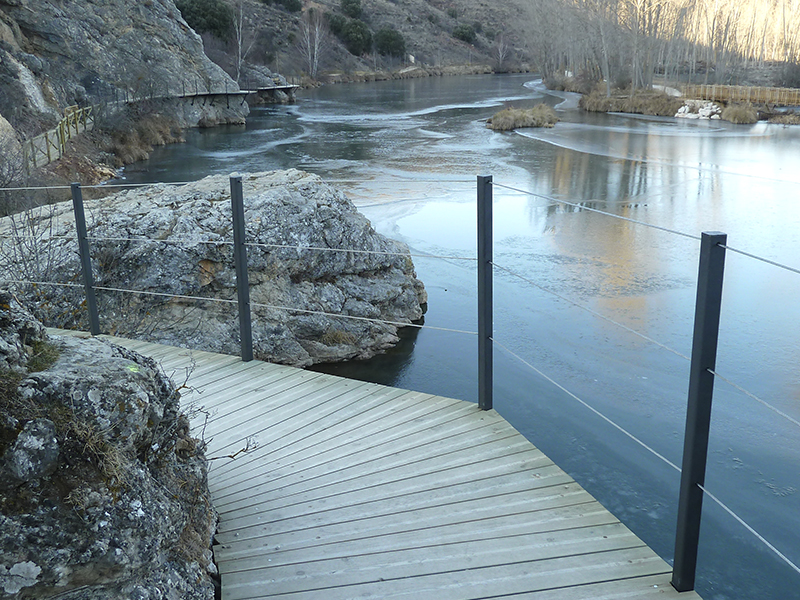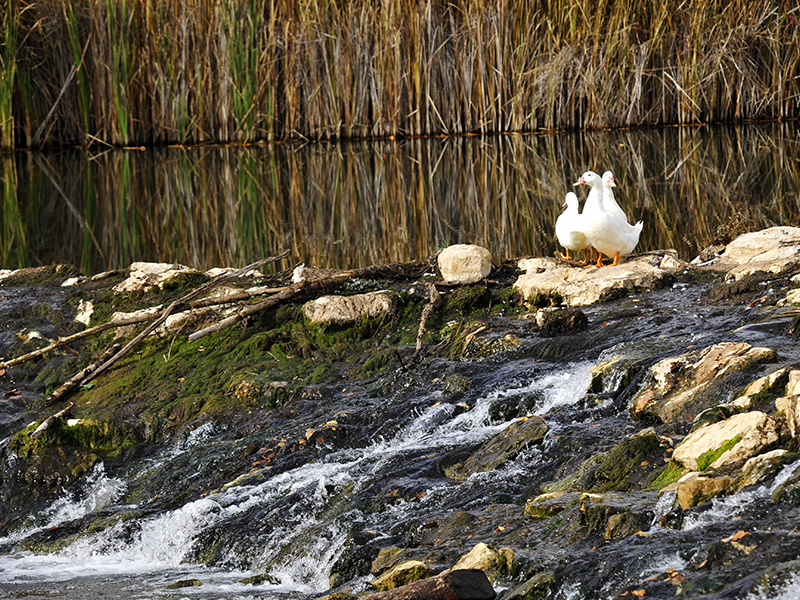
Trails, flora and fauna
DUERO RIVERBANKS
If there is something that obviously stands out in this environment are the natural values that the river contributes. The geology of the environment with the fault of the Sierra de Santa Ana deserves special attention. Interesting is the physiognomy of the river with its dams, the vegetation of the river bank like poplars, poplars, willows, willows ... to which must be added the Of the slopes of the surrounding hills, mostly holm oaks, although there are also many shrubs of degraded soils and some repopulations of conifers and acacias on the slopes of the castle. In addition, many of the shrubs of the Sierra de Santa Ana are aromatic plants such as lavender, thyme, savory, etc.
And of course we can not skip the fauna; (Barbs, trout, bermudes, crabs, frogs, toads, dragonflies, herons, herons, otters ...) as well as the surrounding environment (ocellated lizards, badgers, deer ...). The rocks, although they are of little development, present / display multiple types of hollows that allow the nesting of diverse types of predatory birds like the vulture, owl, common kestrel, peregrine falcon or griffon vulture. Lurking on the banks of the river are large birds like the cormorant and the heron who do not miss the opportunity to fish some barbel or bermejuela. The most frequent and best adapted aquatic bird in deep water is the loon. In addition, it is increasingly common to find an otter in the river.
Despite the passage of time, most places near the Duero and Soria have been changed, but not too much. The rocky and abrupt character of the relief and the low productivity of its floors have allowed you to preserve a large part of its naturalness.
This area also offers the possibility to cross several approved paths, one of them (PR-SO 112) ascending to the top of the Sierra Santa Ana, exceptional viewpoint from where to get a wide panoramic view of Soria and from where you can see drawn in the Horizon a ridge of more than 100 kilometers in length that links the high sierras of the Northern Iberian System. From here it is possible to contemplate at the same time the three highest summits of the province (Urbión, Moncayo and Cebollera) .All of these mountain ranges at the bottom of the panorama are divisions of waters of the Duero and Ebro.The whole territory that is contemplated is the Duero basin After the alignment between the Port of Piqueras and the Moncayo is a part of the Soriano territory belonging to the Ebro river basin, where important rivers such as the Alhama, Cidacos and Queiles are born. Around the Sorian capital we can observe how the Douro traces the "crossbow curve", as Machado named it. The other path (PR-SO 113) leads to the place of Valhondo, where the river runs between peñas and whose route is made by the right bank of the river.
The margins can also be traversed on both sides by the wooden walkways and bridges, as well as ascend by the path that connects the river Duero with the Castle. Through these routes you can see the two gates and the remains of the medieval wall, different and spectacular viewpoints, dams, etc.










